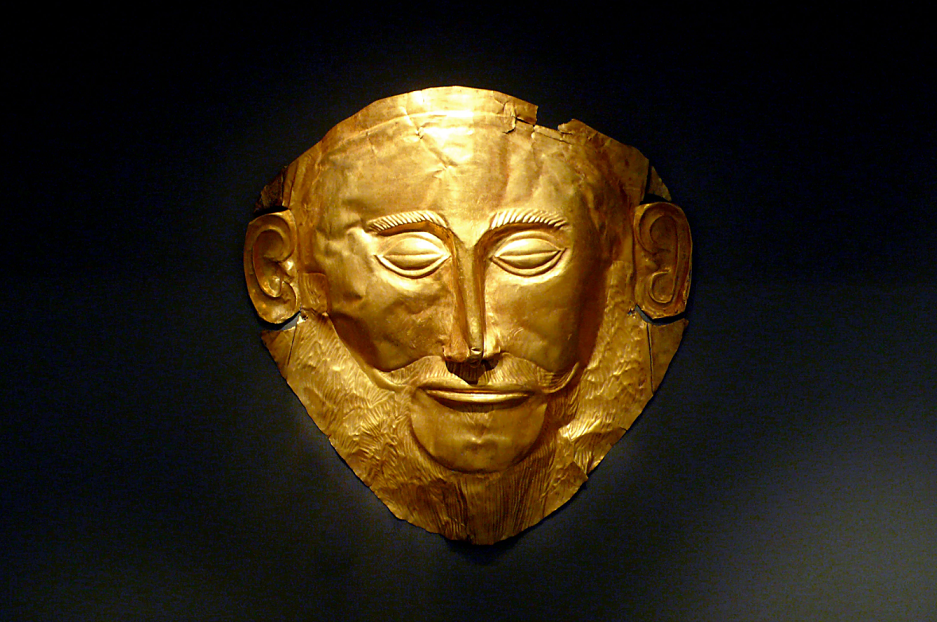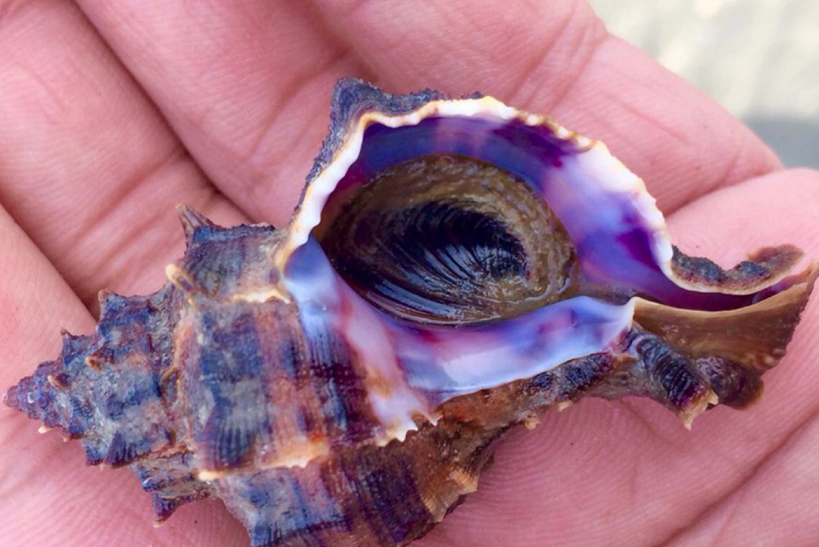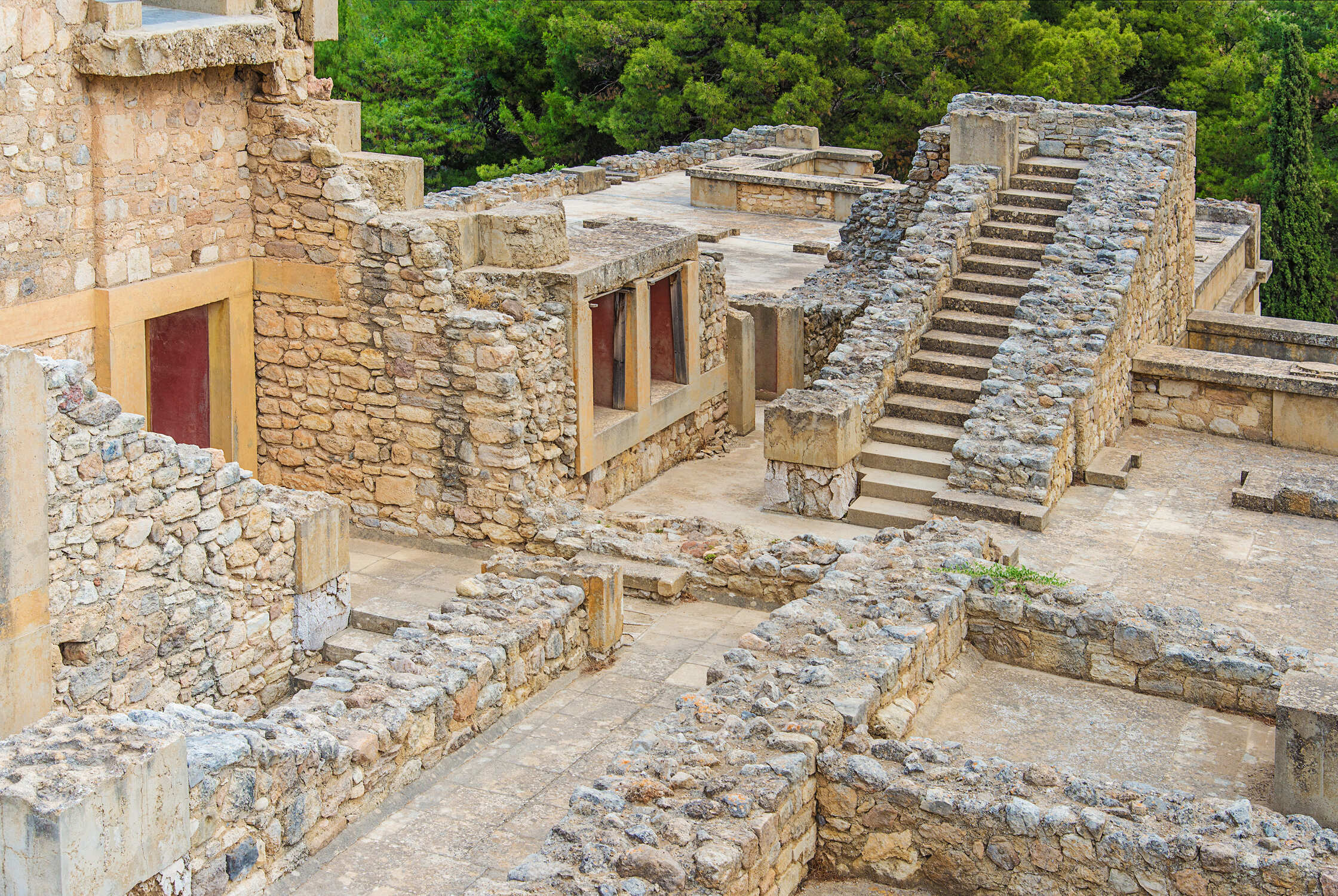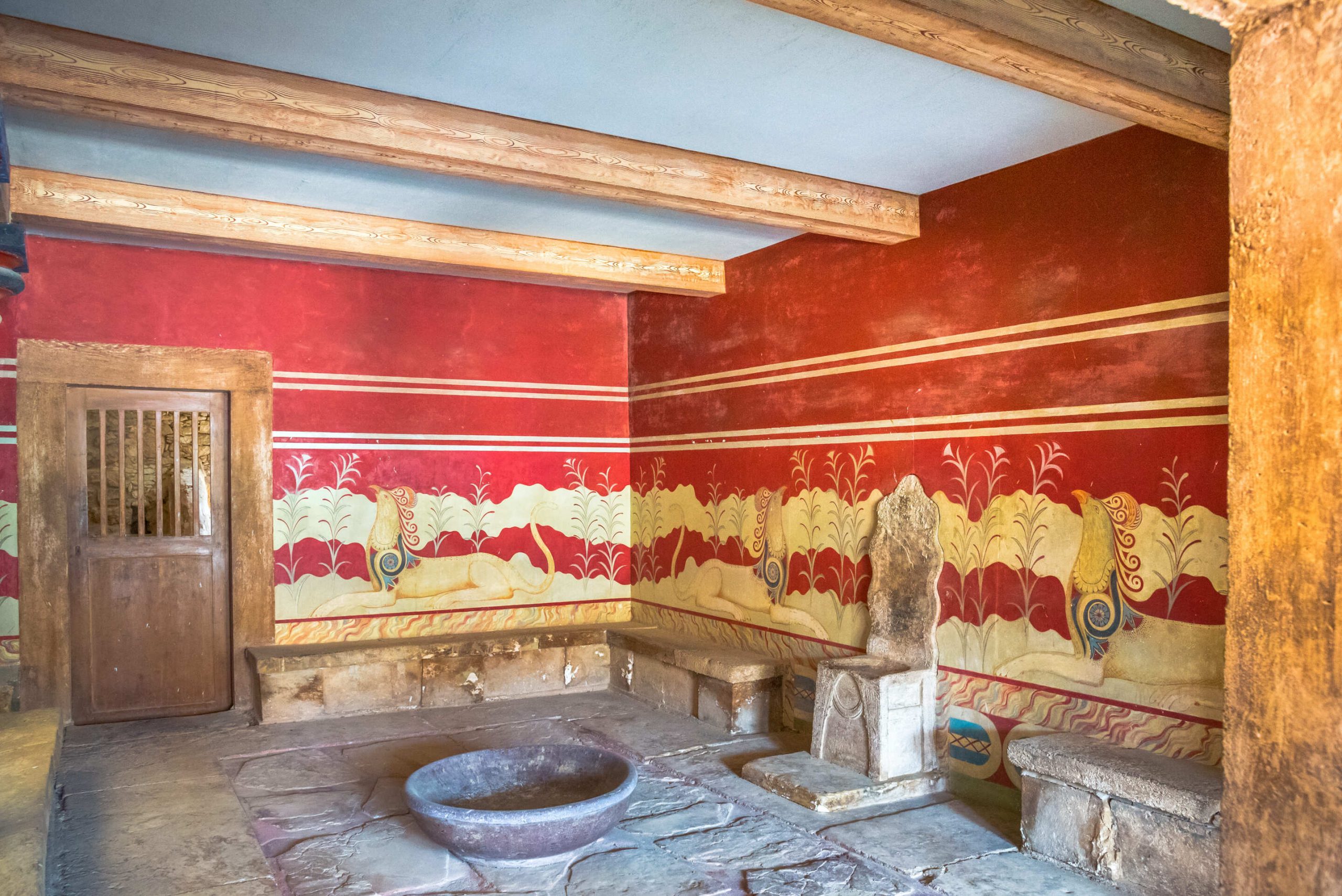Megalonissi is a large island located near Crete. This was a dark and foreboding site for the ancient Greeks. Where a terrifying monster’s desire could only be satiated by a human sacrifice. This was the island of the Minotaur. With a dark maze at its core.
Just over a hundred years ago, a British archaeologist called Arthur Evans came here to unearth the roots of these myths. He found a people lost to history for thousands of years. He called them the Minoans.
The world was astonished by the rediscovery of this sophisticated Bronze Age civilization. Evans believed his Minoans were unique. A culture that, thanks to its island home, had kept the rest of the world at bay. While it quietly developed into Western Europe’s first civilization.
However, recent findings have transformed our knowledge of the Minoans. Evan’s original draft was given an intriguing depth of complexity.
From their beginnings, 5 000 years ago, to their spectacular collapse 2000 years later, it’s apparent that they were linked to the world around them by the water, rather than being divided by it.

Table of Contents
Minoans — a maritime civilization
The island races have a reputation for being conceited and self-centered. However, in Minoan times, if you wanted to develop a civilization, you had to reach out across the horizons and make new connections. The Minoans were islanders, but not isolated ones.
The sea brought many excellent things to Bronze Age Crete. The basic elements the Minoans used to build their society. However, the sea brought with it some negative aspects. Natural disasters and man-made calamities. Recent archaeological studies have revealed that the eclipse of Minoan civilisation and its trip into the shadow countries of myth would be caused by a series of seaborne tragedies.
The Mochlos is a small, hump-backed island off Crete’s north coast. This is the place to go if you want to learn about how the sea affected Minoan civilization’s fate.
Mochlos was first settled 5000 years ago, making it one of the first Minoan settlements. The economy of this bustling town was based mostly on its port, which served as a gateway to the Aegean and Eastern Mediterranean.

The exotic commodities of Egyptian merchants from the south may arrive on these beaches in just three weeks. Cyprus is the next stop east, followed by the Old Testament ports of Tyre, Biblos, and Sidon.
The Greek mainland and the renowned ancient city of Mycenae are reached by heading north. For the roaming salespeople of the sea, this was an ancient commerce center that gave them welcome dry land and a good meal. It’s no surprise that Greece’s island has been dubbed a “stepping stone between continents.”
Why Bronze age?
When Arthur Evans made the first dramatic findings at Knossos a century ago, it was natural to emphasize the Minoans’ uniqueness and creativity. Evans put up a tempting idea of a free and self-sufficient people, thriving on their island home. But, the most recent evidence paints a quite different image.
From the very beginning, the Minoans ventured out into the world beyond their shores, because they lacked the material that defined their age — bronze. Copper and tin bronze are incredibly versatile alloys.

Anything from a precision stone cutter to an eight-foot two-man saw may be made with it. It was the Minoans’ equivalent of the microprocessor. Their civilization’s progress was dependent on technology.
The secrets of bronze manufacture got to Crete early because of its geographical location, adjacent to the more advanced cultures of the Middle East. It was most likely brought 5000 years ago by migrants from Cilicia, which is now Turkey.
Though they weren’t natives, these settlers can claim to be the first Minoans. An advance guard from the future whose arrival put Crete one step ahead in the civilization stakes. Minoan Crete, on the other hand, was in risk of reverting to the Stone Age without continuous supply of copper and tin. Only one choice remained: take to the seas.
A mythical ruler like Minos would have been expected to have a large fleet at his disposal, according to the ancient Greeks. To fend off pirates, intimidate his neighbors, and, when required, bring in supplies for his populace. This was the definition of sea power during the Bronze Age.

The Minoans became world players when they ventured out in pursuit of copper and tin. One of the most frustrating aspects of them is that they have left us with little or no written documents. Fortunatly, they were known and documented by the tribes they encountered.
Consider a time period in the middle of the 15th century BC. Assume you’re leaving Crete, Greece, and boarding an energy Aegean merchant ship bound for Egypt. You arrive at the Nile after only 21 days of journey. You board a barge and continue your journey to Thebes from there. And when you arrive, you’re given a painting of the Minoans that looks nothing like the one Arthur Evans painted.
The Valley of the Kings contains the tomb of Rekhmire, a high-ranking Egyptian administrator. The tomb offers insight into the lives of those who lived within Egypt’s impact zone. The Punts, or Ethiopians, carry incense trees and animal hides on their journeys. The Kushites of Nubia are known for their ivory and gold. Syria’s entourage transports pots and carts. Keftiu’s people are described as a single delegation. We know they’re Minoans because they’re carrying bronze cups.

Starting with the names, the tomb of Rekhmire pushes you to reconsider your mental map. Keftiu instead of Minoans. Because that appears to be the appellation by which the Bronze Age Cretans identified themselves. We should view Crete as a north-westerly extension of what we now call the Middle East, rather than the south-eastern origin of Europe.
Сretan products
The Minoans specialized on the manufacturing of the desirable rather than the strictly useful, according to the Cretan items on show in Rekhmire’s tomb and other evidence. Deluxe pottery, cosmetics, intricate metalwork, and, in one occasion, a pair of excellent leather boots were among the items sold. They created a name for themselves by giving commonplace goods a distinctive Minoan twist.
But there was one luxury item in particular on which this unique island workshop’s reputation would have hinged. It was a marine snail called Murex, which feeds on rotting flesh, hence the foul odor, but the Minoans recognized its true potential. They were able to extract a purple color and a textile dye from it.

Purple represented elegance, rank, and money, much like bronze did. It was simply one of the most valuable goods in the ancient world. Pliny, a Roman author, identified purple as the color of coagulated blood. This was the purple imperial. For heroes and emperors only. Aeschylus, an Athenian poet, wrote poems about it.
The eastern city port of Tyre as known as the source of this valuable dye in classical times, but recent archaeological findings reveal that purple manufacture may have begun centuries before the Minoans. The Purple would have established the Bronze Age Cretans as market leaders in the eastern Mediterranean luxury market.
Minoan`s architecture
But it wasn’t just items that were being transported across the oceans. People were as well.
In the Bronze Age, artists, architects, and craftsmen were on the move all over the eastern Mediterranean. Rulers that want to impress other foreign countries with the expertise and caliber of their workforce regularly release them. When you put creative employees in a room with people who have voracious eyes and a natural curiosity for learning, the potential for cross-pollination of cultures and ideas becomes very real. Which could explain the appearance of the palace, which is completely unknown to Crete.
Another key milestone in the growth of Minoan culture is the emergence of magnificent and enigmatic buildings about 1000 years after bronze was introduced to the island. Knossos and Malia on the north coast, Zacross in the east, and Phaistos in the south have all been recognized as having palaces. Archaeologists believe they’ve discovered two or three more. Each has its own distinct characteristics, yet they’re all variations on the labyrinth’s main idea.
But who came up with the original? Migrant textile workers from Minoan Crete may have been active in Egypt around this time, according to evidence. In this case, it’s feasible that they engaged in some architectural espionage while they were there.
A labyrinth was not invented by the Cretans. The Egyptian pharaoh who built a maze-like tomb near Crocodopolis, the city of crocodiles, are regarded to be the rightful owners of this honor. The Egyptian labyrinths have vanished. An awed Herodotus, a Greek historian who saw it sometime in the 5th century BC, described it. He said that it’s difficult to believe that the countless halls, passageways, and chambers are the creation of men.
Minotaur`s labyrinth
The narrative of the Minotaur’s labyrinth is one of the most dramatic and evocative of all Greek myths. An underground battle between Theseus, the ultimate hero, and the Minotaur, the ultimate monster. The offspring of a lady and a bull who had an improper relationship.

You can’t help but wonder if there’s a grain of truth in all of this fantastical tale. Whether the Athenaeum tribute refers to a time when mainland Greece was ruled by Crete and the triumph of Theseus over the Minotaur to a time when the tables were turned.
There was no half-man, half-bull, of course. Maybe there was a real-life king Minos and a cunning princess Ariadne. You might hypothesize for hours, but it wouldn`t be a waste of time. Nothing happens by accident, and some of the most important archaeological findings have been motivated by a desire to identify where myths have a historical basis.
To find the answer, Arthur Evans organized a team of nonstop workers. They appeared to dig indefinitely wherever they went. Staircases that cascade, winding corridors, and a confusing array of chambers, some modest and intimate, others magnificent and intimidating. This was more than a monstrous cage. It was a labyrinth.

Even the most hopeful hunter of the past would have been blown away by what Arthur Evans and his companions had discovered at Knossos. A 5000-year-old society that had been buried in myth has been resurrected.
The palace of Knossos
He hadn’t discovered a gold-rich Greek city, but the loot from Knossos was wealthier than that of Troy or Mycenae. The artifacts were of exceptional quality, but it wasn’t just the craftsmanship that left an impression. A month into the excavations, men digging at the west entrance unearthed a massive, imposing fresco fragment of a charging bull. It was life-size and life-like, fashioned in high relief from lime plaster. It was a terrifying experience to meet this beast as it came from the soil. One of the workers pushed the mud away, revealing the creature’s flared nostrils and pointed horns. He shouted in despair, convinced that he had aroused a demon or, worse, the devil himself.

Evans had discovered his labyrinth and bulls. All he needed now was proof of King Minos’ existence, and the stories would be complete. Workmen began uncovering a network of little anti-chambers leading into a major room on the 13th of April 1900, just three weeks after the first basket of earth had been filled. Workers discovered a fresco piece of a bull’s hoof on the south wall, as well as excellent gypsum benches all around the area. The most fascinating secret, though, was hidden behind the north wall. Evans discovered something he must have fantasized about finding: an intricately carved throne.
Evans considered the possibility that this was Ariadne’s throne. The wide contoured seat was apparently thought to be better suited to a woman’s ample buttocks. But, before long, he had made up his mind, and in a telegram to the Times, he proclaimed the discovery of King Minos’ throne.

If it was actually King Minos’ seat, he had excellent taste in palatial pads. This was an extraordinary structure, and it was created with no money spared, as befitting one of the most powerful monarchs of the Bronze Age. At its heyday, Knossos covered 700,000 square meters and had an approach as grand as the male. The palace boasts an impressive array of original features: hinge doors, drainage systems, and even flush toilets.
You can see the legendary palace with your own eyes on a private tour from GetExperience. In addition to the palace, you’ll enjoy an olive oil and wine tour in Archanes. And to catch your breath and have a lovely lunch, you will go to a traditional tavern.
Greeks Taurokathapsia
Each of the seven or eight distinct entrances appears to be set aside for a special event. Some are for privileged access, while others, such as this one near the north entrance, are for instant or inspiring impact.
Whatever route you take, you’ll arrive at the massive central court, which spans 54 meters from north to south and is 27 meters wide, enough to accommodate four tennis courts with room to spare. This room could clearly handle large crowds, but no one knows what it was utilized for. It’s a giant question mark at the heart of Knossos.
Archaeologists are still attempting to figure out what happened to this mysterious place, but the most popular idea is also the most dramatic. A stunning religious ritual took place in the central court. Bull-leaping was taurokathapsia, and it was to Knossos what gladiatorial fighting was to Rome.
There are numerous indicators from known art as to how these ominous-sounding rituals would have been carried out. Even so, there’s a lot of opportunity for interpretation…


